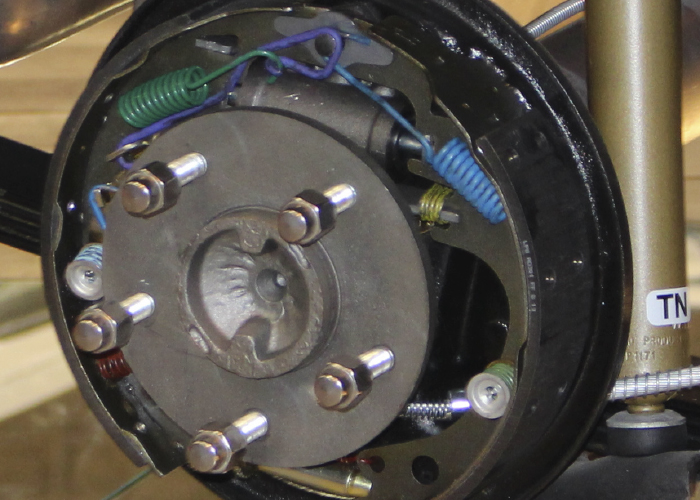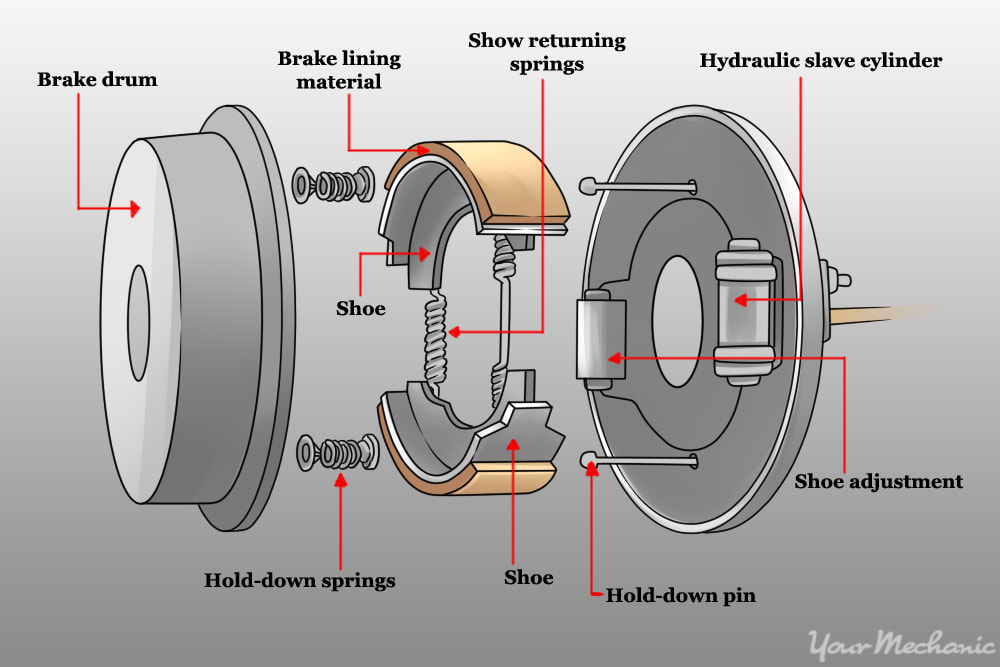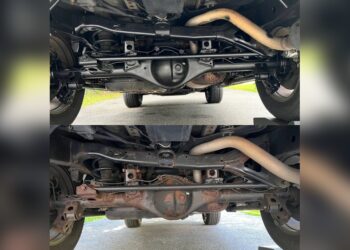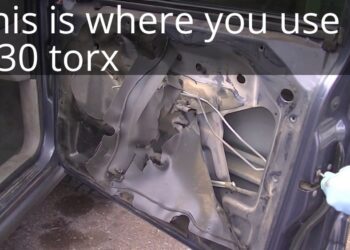Ensuring your car’s parking brake is properly adjusted is vital for safety. A well-adjusted parking brake can prevent accidents and keep your vehicle secure when parked.
Whether you drive daily or occasionally, knowing how to adjust your parking brake is crucial. A properly functioning parking brake ensures your vehicle stays put, even on slopes. Over time, the brake can loosen, reducing its effectiveness. This blog will guide you through the simple steps to check and adjust your parking brake.
You’ll learn to spot signs of wear, understand the tools needed, and ensure your car’s brake system is in top shape. Keep reading to find out how to maintain this essential part of your vehicle.
Preparation
Adjusting the parking brake is a crucial maintenance task. It ensures your vehicle stays secure when parked. Proper preparation is key to a smooth and safe adjustment process. You need the right tools and must follow safety precautions.
Tools Needed
Gather all necessary tools before starting. You will need a wrench set, a screwdriver, and a jack. A flashlight can help you see under the vehicle. Having the right tools makes the job easier and faster.
Safety Precautions
Safety is very important. Always park your vehicle on a flat surface. Use wheel chocks to prevent any movement. Wear safety gloves and goggles. These protect your hands and eyes from injuries. Ensure the vehicle is in neutral and the engine is off. Double-check these steps before you begin.

Credit: www.brakeandfrontend.com
Locate Parking Brake
Ensuring your parking brake works well is essential for vehicle safety. Knowing how to locate the parking brake is the first step in adjusting it. This guide will help you find the parking brake in your car.
Consult Car Manual
The car manual is your best friend for locating the parking brake. Every car model may have a different parking brake system. The manual provides specific information. It often includes diagrams and step-by-step instructions.
If you don’t have a physical copy of your car manual, check online. Most manufacturers offer digital versions. Download it for easy reference. Always keep it handy.
Common Locations
Parking brakes are usually found in one of three places. The first common location is between the front seats. This is the hand-operated lever. Pulling it up engages the brake.
The second place to look is near the driver’s footwell. This is a foot pedal. Press it down to engage the brake. Release it by pressing it again.
Some modern cars have an electronic parking brake. This is a small button near the gear shift. Press the button to engage or disengage the brake.
Knowing where to find your parking brake is crucial. It helps you keep your vehicle secure. Always familiarize yourself with its location and operation.
Inspect The Brake
To ensure your parking brake functions well, regularly inspect the brake. This helps maintain safety and efficiency. A thorough inspection involves a few key steps. Each step is crucial for identifying potential issues and ensuring your brake is in top condition.
Visual Inspection
Start with a visual inspection. Look at the brake components. Check for any visible damage. This includes checking the brake pads, rotors, and cables. Ensure there are no cracks, rust, or other signs of wear.
- Inspect the brake pads for thickness.
- Look at the rotors for smoothness.
- Check the cables for fraying or breaks.
Check For Wear
Next, check for wear. This involves a more detailed examination. Use a flashlight for better visibility. Look closely at the brake pads. They should be at least 1/4 inch thick.
- Measure the brake pad thickness.
- Examine the rotors for grooves or scoring.
- Test the brake cable tension.
By performing a thorough inspection, you can spot issues early. This ensures your parking brake remains effective and reliable.

Credit: www.yourmechanic.com
Adjust The Cable
Adjusting the parking brake cable ensures your brake system works correctly. It can prevent your car from rolling when parked. Follow these steps to adjust the cable effectively.
Loosen Lock Nut
To start, locate the lock nut on the parking brake cable. It is usually found under the car near the rear wheels.
- Use a wrench to loosen the lock nut.
- Turn the nut counterclockwise.
- Ensure it is loose enough for the cable to move.
Tighten Adjustment Nut
Next, find the adjustment nut on the same cable. This nut adjusts the tension in the parking brake cable.
- Use a wrench to tighten the adjustment nut.
- Turn the nut clockwise.
- Check the brake lever. It should not be too tight.
Repeat the process until the brake lever feels firm but not overly tight. Test the brake by engaging and releasing it several times.
By following these steps, you can ensure your parking brake is properly adjusted and reliable.
Test The Brake
After adjusting your parking brake, it is crucial to test it. This ensures your safety and confirms the brake works properly. Follow these simple steps to test the brake efficiently.
Engage And Release
First, engage the parking brake by pulling the lever or pressing the pedal. Make sure it feels firm and secure. Release the brake and notice if it returns smoothly to its original position. If it doesn’t, there might be an issue.
Check for any unusual noises during engagement and release. Creaking or grinding sounds can indicate a problem. Proper function ensures the brake will hold your vehicle in place.
Check For Proper Tension
Next, check the brake for proper tension. Engage the brake and attempt to move the vehicle slightly. The vehicle should not move if the brake is working correctly.
If the vehicle moves, the brake might be too loose. Adjust the tension and test again. A well-adjusted brake provides a firm hold on the vehicle.
Repeat the tension check on a slight incline. The vehicle should stay stationary when the brake is engaged. This ensures the brake can handle different terrains.
| Step | Description |
|---|---|
| Engage and Release | Pull the lever or press the pedal. Ensure it feels firm. Release and check for smooth return. |
| Check for Proper Tension | Engage the brake. Attempt to move the vehicle. Adjust tension if necessary. |
By following these steps, you ensure your parking brake functions correctly. This is key for your vehicle’s safety.

Credit: www.reddit.com
Reassemble Components
Once you have successfully adjusted the parking brake, it’s crucial to reassemble the components. Reassembling ensures that everything is back in place and functions correctly. This section will guide you through the steps to reattach panels and secure all fasteners.
Reattach Panels
Begin by aligning the panels with their original positions. Make sure they fit snugly against the frame.
- Inspect the clips: Ensure all clips are intact and not damaged.
- Snap panels back: Press firmly until you hear a click.
Repeat this process for each panel. Double-check their alignment to avoid any loose parts.
Secure All Fasteners
Next, gather all the fasteners you removed earlier. Ensure you have the correct ones for each part.
- Insert screws: Place screws in their respective holes.
- Tighten bolts: Use a wrench to secure the bolts firmly.
- Check tightness: Make sure everything is secure but not overtightened.
Ensure no fasteners are missing. This will keep the brake components secure and functional.
Final Checks
After adjusting the parking brake, it’s crucial to perform some final checks. These checks help ensure the brake is functioning correctly and safely. Below are detailed steps and what to look for during these checks.
Road Test
Take your car for a short drive. This helps verify the parking brake works under real conditions.
- Find a safe, flat area to conduct the test.
- Engage the parking brake while the car is in motion at a slow speed.
- The car should slow down gradually and stop.
- Listen for unusual noises during this process.
If the brake does not hold, additional adjustments may be needed.
Further Adjustments If Needed
If the parking brake failed the road test, follow these steps:
- Park the car on a flat surface.
- Lift the rear wheels using a jack for easy access.
- Tighten the brake cable if it is too loose.
- Loosen the cable if it is too tight.
- Repeat the road test to ensure proper adjustment.
Continue adjusting until the brake performs well during the road test.
Maintenance Tips
Maintaining your parking brake is crucial for vehicle safety. Proper upkeep ensures your car doesn’t roll when parked. Learn essential tips to keep your parking brake in top condition.
Regular Inspections
Regular inspections help identify issues early. Check the parking brake every six months.
- Test the brake on a slight incline.
- Ensure it holds the vehicle in place.
- Listen for unusual noises when applying the brake.
Follow these steps for a quick check:
- Engage the brake fully.
- Attempt to move the vehicle.
- Feel for resistance and secure holding.
Signs Of Malfunction
Identifying signs of malfunction prevents accidents. Watch for these red flags:
- Brake feels loose or too tight.
- Car rolls when parked.
- Unusual sounds during application.
Common issues may include:
| Issue | Cause |
|---|---|
| Loose brake | Worn cables or components |
| Tight brake | Rust or debris in mechanism |
| Noise | Damaged parts |
Address issues promptly to ensure your safety. Regular maintenance keeps your parking brake reliable.
Frequently Asked Questions
How Do You Adjust A Parking Brake?
Locate the adjustment nut. Tighten or loosen it until the brake holds well.
Why Is My Parking Brake Not Holding?
The cable might be loose. Or the brake pads are worn out. Check and adjust them.
How Often Should You Adjust The Parking Brake?
Usually, every 6 months. Or when you notice it’s not holding properly.
Can I Adjust The Parking Brake Myself?
Yes, you can. Follow your car manual instructions. It’s a simple process.
What Tools Do I Need To Adjust The Parking Brake?
You need a wrench or socket set. Sometimes a screwdriver. Simple tools.
Conclusion
Adjusting your parking brake ensures safety and prevents accidents. Regular checks and adjustments are crucial. Anyone can do it with the right tools and instructions. Avoid costly repairs by maintaining your brake. Follow these steps, and your car will thank you.
Stay safe on the road. Happy driving!

















